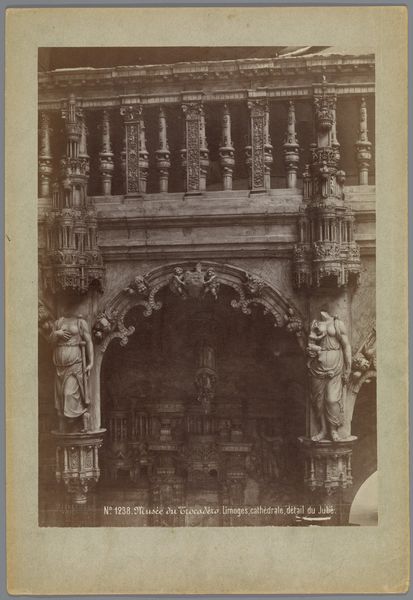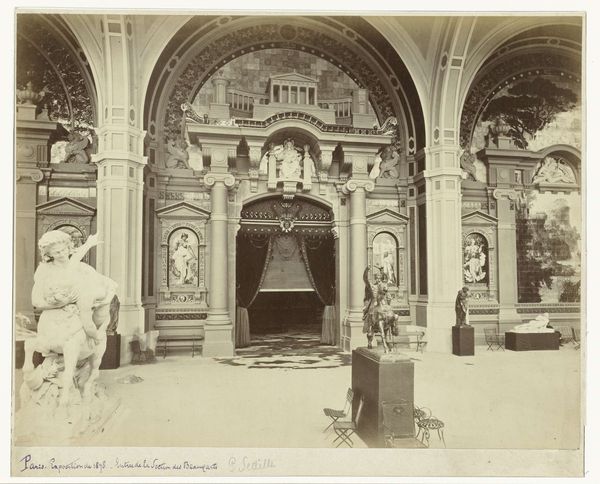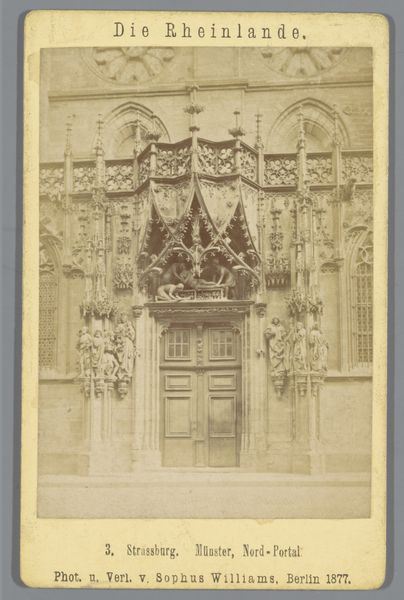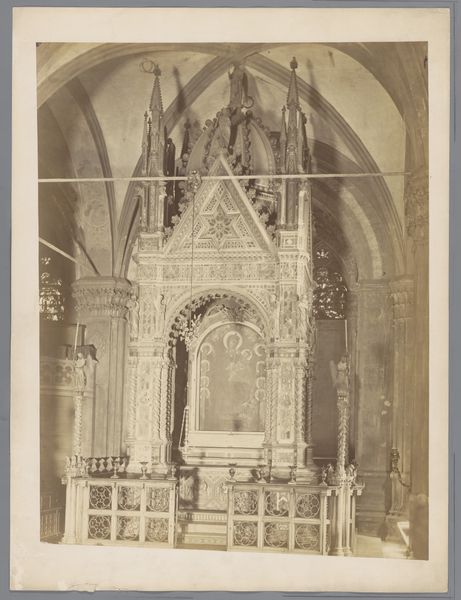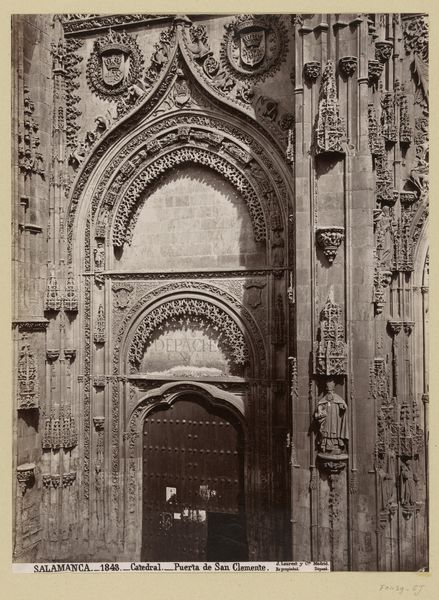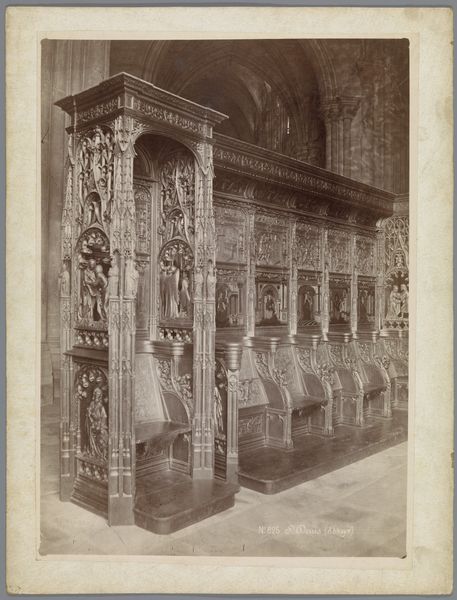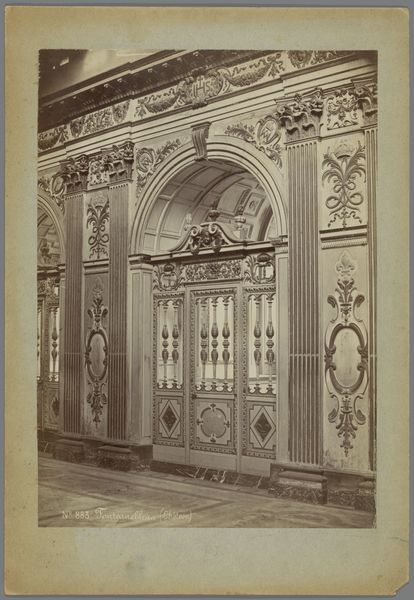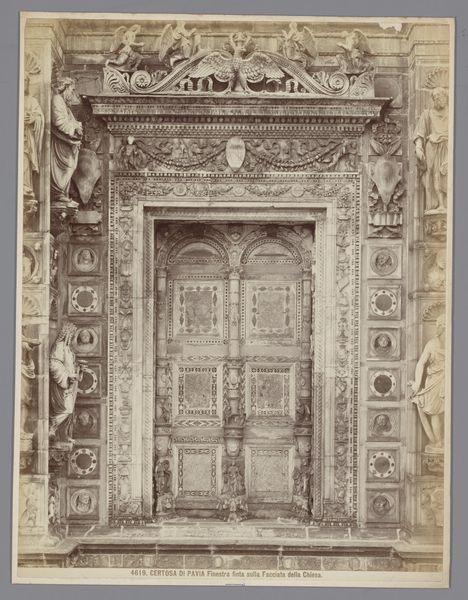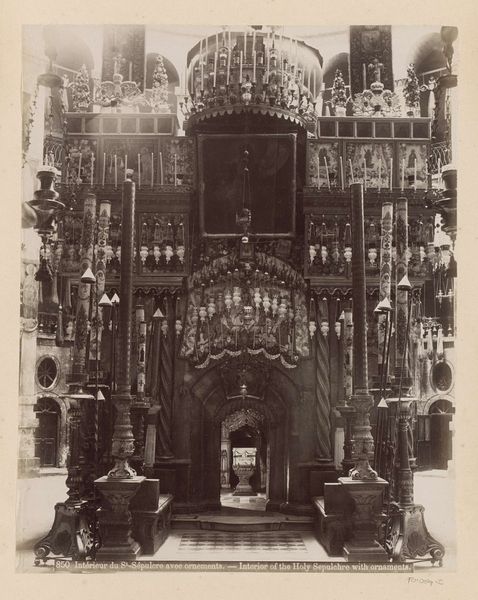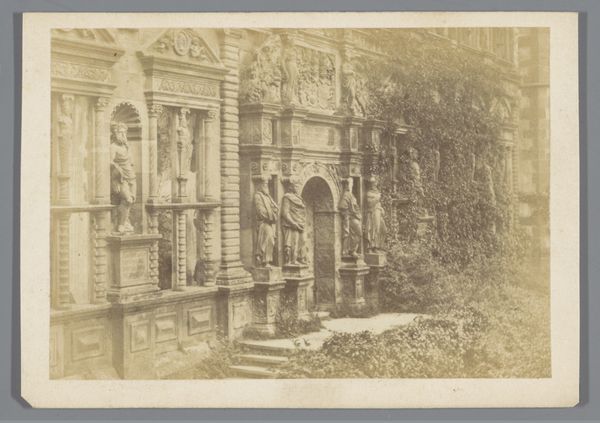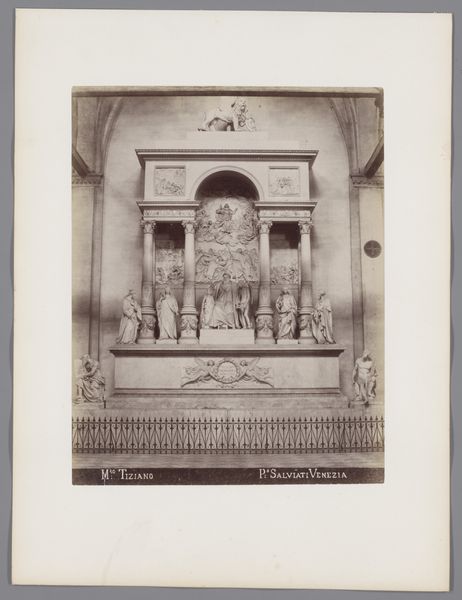
print, photography, architecture
# print
#
landscape
#
historic architecture
#
photography
#
19th century
#
architecture
Dimensions: height 249 mm, width 330 mm
Copyright: Rijks Museum: Open Domain
This photograph of the Façade van de Convento de San Esteban in Salamanca was captured around 1875 by Juan Laurent, employing a process that was still relatively novel at the time. The albumen print is created by coating paper with egg white and silver nitrate, then exposing it to light through a negative. This process yields a warm, sepia tone, and an incredible amount of detail, as we can see in the intricate carvings of the Convento’s façade. What makes this image special is that, while on the surface, it seems like a straightforward depiction of architecture, it also speaks to the rise of photography as a medium. Laurent and his contemporaries were essentially industrializing the capture and distribution of images, a process that democratized representation, making views of distant places and remarkable buildings available to a wider audience. It’s a reminder that every photograph involves choices about framing, focus, and exposure, subtly shaping our perception. The labor and resources that go into these processes often go unnoticed, yet they are crucial to its creation. Laurent's work invites us to consider the relationship between technology, labor, and art, blurring the lines between documentation and artistic expression.
Comments
No comments
Be the first to comment and join the conversation on the ultimate creative platform.

